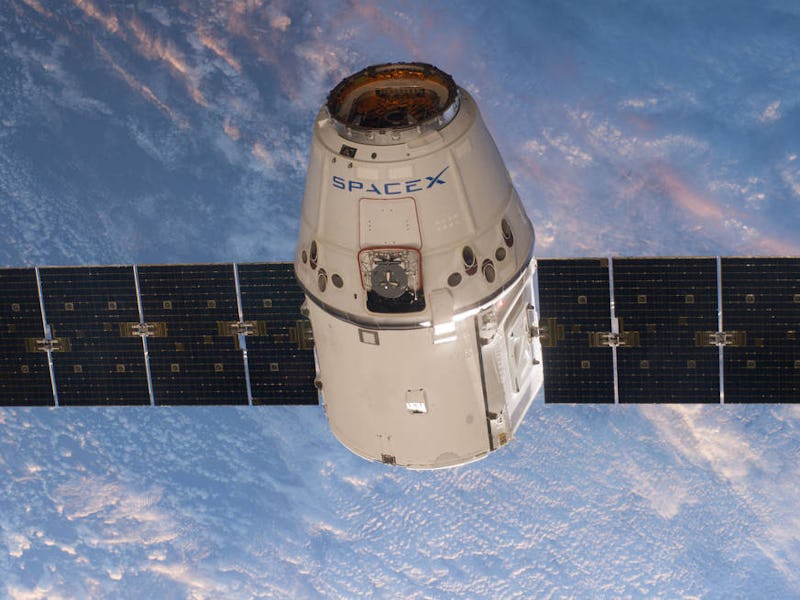NASA Sets a Date For the Next Launch of the SpaceX Dragon
This is the first time SpaceX is sending up a spacecraft to the ISS since its failed launch in June.

NASA has officially marked the date for the next cargo resupply mission to the International Space Station. On April 8th at approximately 4:43 p.m. EST, SpaceX’s Dragon will be launched into orbit bringing science research materials, crew supplies, and hardware the onboard laboratory.
This is the first time Elon Musk’s SpaceX is attempting to send a cargo spacecraft to the ISS since its failed launch in June when the Falcon 9 rocket disintegrated about two minutes after launch. For this upcoming launch the Dragon will again be flown with the Falcon 9.
The hope is that the two-stage rocket will be able to recreate the 2012 moment when the Falcon 9’s delivery of the Dragon to the ISS created two monumental firsts. That mission was the first time a commercial company ever made it to the ISS and the first time a commercial spacecraft was able to deliver cargo to the ISS and return intact to Earth.
At the top left is the expandable module, connected to the ISS.
The Dragon — which SpaceX plans on using for manned flights in two to three years — will also be bringing up a Bigelow Aerospace expandable habitat module. The purpose of these lightweight expandable environments to provide another comfortable environment where astronauts can conduct their work while being protected from solar and cosmic radiation. They require minimal payload volume on a rocket and are going to be a big help when a manned mission finally makes it to Mars.
The spacecraft will be launched from the Cape Canaveral Air Force Station in Florida and is expected to return in May. Its return mission plays a substantial role in NASA’s “one-year mission” because it will be bringing back the biological samples aka bodily fluids of astronauts Scott Kelly and Mikhail Korniyenko. Once on Earth, the samples will be tested to see how Kelly and Korniyenko’s bodies were altered by living in space.